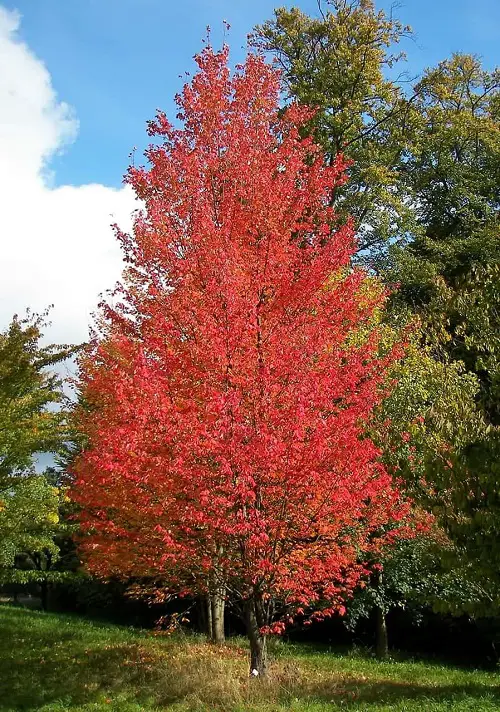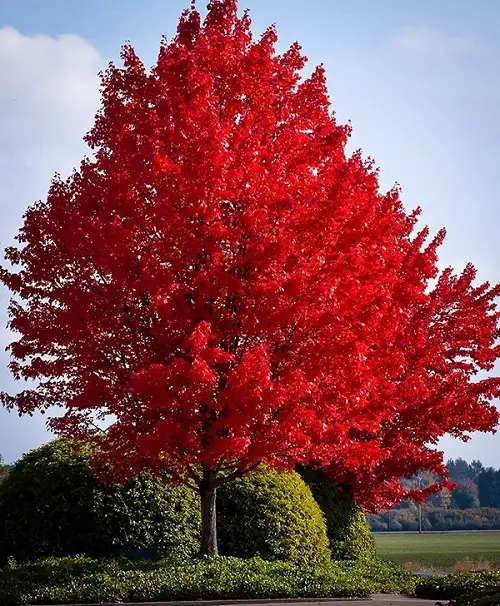Here are all the details you will need for the Rhode Island State Tree! Read on to find out how to grow it easily.

The Rhode Island State Tree will make you stop at your tracks with its beautiful foliage! Let’s find out more about it!
Learn How to Grow a Japanese Maple Tree in a Pot here
Rhode Island State Tree
- Red maple is the official Rhode Island State Tree.
- The magnificent tree was adopted as the official state tree only in 1964.
- Red maple is native to the moist woods or wet bottomlands and is the fastest-growing tree in eastern America. It changes the color of leaves in fall, and one can see shades of purple, gold, and scarlet.
- This tree is not poisonous to dogs, cats, or humans but is toxic to ponies and horses.
Year Adopted: 1964
USDA Zones: 3-9
Botanical Name: Acer rubrum
Common Name: Red Maple, Water Maple, Swamp Maple, Drummond Red Maple, Carolina Red Maple, Trident Red Maple, Scarlet Maple, Soft Maple
Learn about the State Tree of Pennsylvania here
Rhode Island State Tree Growing Requirements

Where to Grow
The Rhode Island State Tree thrives best in bright light, and it is best to plant it in a location that enjoys 4-6 hours of bright sunlight daily.
Best Soil
Red Maple grows best in sandy, acidic, loamy, well-draining soil. Avoid planting the tree in salty or alkaline soil, as it can yield pale-looking leaves and stunted growth.
Watering
The tree loves moist soil. Water when the topsoil feels a little dry to the touch, especially when the plant is young. Once the tree attains a height of 6-8 feet, it will take care of its own.
Fertlizer
Although you may not need to fertilize this plant, using an all-purpose fertilizer once a month in spring will boost the growth. Do not feed the tree in winter.
Pests and Diseases
Red Maple is prone to pests and diseases. Some common diseases that can attack the plant are verticillium wilt, leaf spot, tar spot, anthracnose, and powdery mildew.
Common pests like aphids, gall mites, cankerworms, leafhoppers, and mapleworms can cause trouble. Use insecticidal soap to get rid of them.


